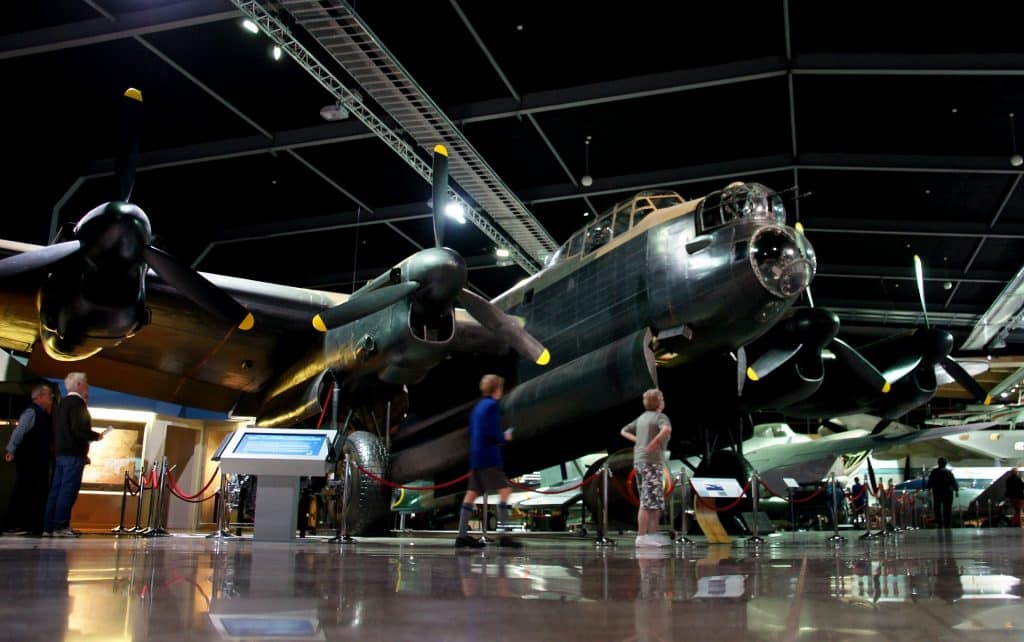The Avro Lancaster was a British Second World War heavy bomber, designed and manufactured by the Avro aviation company, as a contemporary of the Handley Page Halifax.
Both bombers were developed to the same specification, as well as the Short Stirling, all three aircraft being “four-engined” heavy bombers adopted by the Royal Air Force during the 1940s wartime era.
The Lancaster has its origins in the twin-engine Avro Manchester which had been developed during the late 1930s but technical issues with the Manchester quickly served to side-line it from RAF service in 1942 and the “Lanc” swiftly took its place.
Designed by Roy Chadwick and powered by four Rolls-Royce Merlin engines (although Bristol Hercules engines were tried in one version) it first saw service with RAF Bomber Command in 1942 and as the strategic bombing offensive over Europe gathered momentum, it was the main aircraft for the night-time bombing campaigns that followed.
As increasing numbers of the type were produced, it became the principal heavy bomber used by the RAF, the Royal Canadian Air Force (RCAF) and squadrons from other Commonwealth and European countries serving within the RAF, overshadowing the Halifax and the Stirling.
The “Lanc”, as it was more affectionately known by those who flew and worked on her, became one of the most heavily used Allied night bombers of the Second World War. The versatility of the Lancaster was such that it was chosen to equip 617 Squadron (famous for the Dambusters Raid in May 1943) where it was modified to carry the Upkeep “Bouncing Bomb” designed by Barnes Wallis for Operation Chastise, the attack on Germany’s Ruhr valley dams.
Although the Lancaster was primarily a night bomber, it excelled in many other roles, including daylight precision bombing, for which some Lancaster’s were adapted to carry the 12,000 lb Tallboy and then the 22,000 lb Grand Slam earthquake bombs (also designed by Wallis), the largest payload of any bomber in the war.
The Lancaster also took on the role of long range anti-submarine patrol aircraft and air-sea rescue and was used for photo-reconnaissance, aerial mapping and even as a flying tanker for aerial refuelling.
Over 7,000 Lancaster’s were built during World War II but only 2 remain airworthy today, one with the Battle of Britain Memorial Flight (BBMF) operated by the RAF and based in Lincolnshire https://www.raf.mod.uk/display-teams/battle-of-britain-memorial-flight/.
The other is operated by the Canadian Warplane Heritage Museum based in Ontario, Canada. https://www.warplane.com/visiting-canadian-warplane-heritage.aspx
See them both flying together over the Derwent Dam in Derbyshire in the video below.
However, if you do want to get up close and personal with a real life Lancaster today, then we would recommend a trip to the Lincolnshire Aviation Heritage Centre where you can actually climb on board and even take a ride on it…..just a taxi ride unfortunately at the moment ???? https://www.lincsaviation.co.uk/
